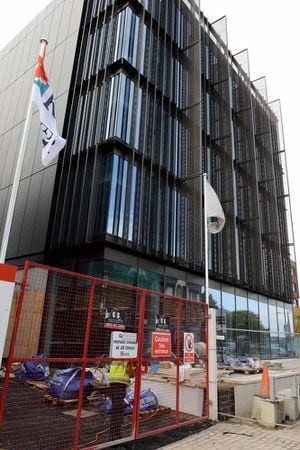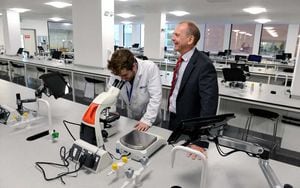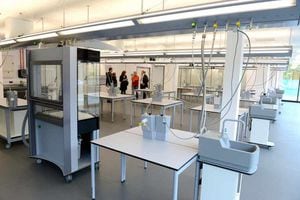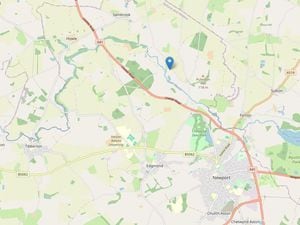£25m lab block for the University of Wolverhampton
The University of Wolverhampton is hoping to inspire the leading scientists of tomorrow with a high-tech new lab block.

The first phase of the £25 million facility, named the Rosalind Franklin Science Centre after the pioneering scientist, has opened its doors.


The old 1960s teaching building has been refurbished and extended both upward and outward and features state-of-the-art facilities for 2,500 students and 150 Faculty of Science and Engineering staff.
See also: University of Wolverhampton launch hardship fund in memory of Lord Bilston.
An outreach laboratory on the ground level, with floor-to-ceiling windows along Stafford Street, is part of the university's goal to increase public interest in science and allows people to look in at any experiments taking place.
Vice-Chancellor, Professor Geoff Layer said schools will take classes at the new lab as part of the new STEM (Science, Technology, Engineering and Maths) resource.
Asked why the university believes the programme is important, Professor Layer said there are two great shortages they want to address: people studying science in general and a shortage of women studying science.
See also: Golden girl Denise wins honorary degree.
"The manufacturing business of the Black Country, Staffordshire, and Shropshire necessitates people having science understanding, be it rural agricultural science or be it in heavy plant. It is crucial we enhance the number of people studying science."

Professor Layer said the name of the centre "gives the university an opportunity to honour a scientist who was not recognised for her achievements during her career. She is now seen to have made a major contribution to modern biology. Her career also reflects the difficulties faced by female scientists in the 20th century, and a reminder of the need to improve matters in the 21st."
Studying at Newnham College, Cambridge, Franklin completed her studies in 1941 but, as women were not entitled to degrees at that time, was only awarded a 'degree titular'.
Professor Layer said: "The centre will be home to the next generation of scientists who can draw inspiration from Franklin's pioneering role in the discovery of DNA. It's an excellent opportunity to promote and value a famous British female scientist and demonstrate the commitment of the university as a community to the cause of advancing the role of women in the STEM subjects."
See also: Wolverhampton University buys fire-ravaged Springfield site.
After finishing her work on DNA, she led pioneering work on the polio virus, but died from ovarian cancer at the age of 37.

The first floor of the new centre features chemistry and teaching labs, equipped with mounted, moveable tablets at each work station so students can access learning materials throughout the lesson.
Five years of planning have gone into the project, with every little detail considered - from distilled and de-ionised water available on tap, to lab versions of dumb-waiters to transport chemicals and glassware between floors.
'Dirty corridors' mean students and visitors won't cross paths with chemicals and other lab gear being transported throughout the building.
When the centre is fully completed, it will house labs for chemistry, forensics and biology, pharmacy, biotechnology, and biomedical, microbiology and polymer research.
The top floors are part of the next phase and will be ready for the start of the second semester in February.





